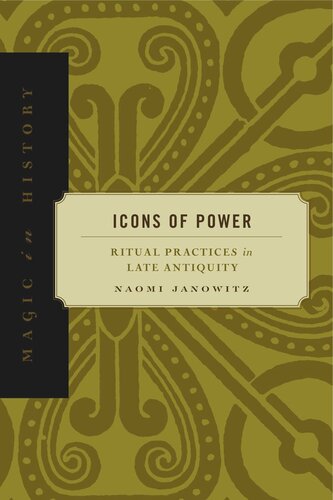

Most ebook files are in PDF format, so you can easily read them using various software such as Foxit Reader or directly on the Google Chrome browser.
Some ebook files are released by publishers in other formats such as .awz, .mobi, .epub, .fb2, etc. You may need to install specific software to read these formats on mobile/PC, such as Calibre.
Please read the tutorial at this link: https://ebookbell.com/faq
We offer FREE conversion to the popular formats you request; however, this may take some time. Therefore, right after payment, please email us, and we will try to provide the service as quickly as possible.
For some exceptional file formats or broken links (if any), please refrain from opening any disputes. Instead, email us first, and we will try to assist within a maximum of 6 hours.
EbookBell Team

4.3
38 reviewsIn the waning years of the Roman Empire, Jews, Christians, and pagans alike used rituals to bridge the gap between the human and the divine. Depending on one’s point of view, however, such rituals could be labeled negatively as "magic" or positively as "theurgy." This has led to numerous problems of interpretation, including marginalizing certain ritual practices as magic or occult while privileging others as genuine or orthodox. In Icons of Power, Naomi Janowitz sifts through the polemics to make sense of the daunting mosaic of religious belief and practice in Late Antiquity.
From rabbis who ascended to heavenly places, to sorcerers seeking to harm enemies with spells, to alchemists working metals to purify the soul, Janowitz reveals how ritual practitioners held common assumptions about why their rituals worked and about how to perform those rituals. Indeed, such assumptions were so much a part of the inherited mentality of the age that they were, for the most part, never explained—and this is precisely what Janowitz accomplishes in Icons of Power. By shifting the discussion out of the rhetoric of "magic" or "mysticism" and describing the mechanisms of ritual with semiotic terms, she moves us beyond the value-laden terminology of ancient polemicists and modern scholars so that we can better see how these rituals worked and how they affected the social identities of their followers.
Janowitz recovers a lost world of religious expression that has been clouded by misinterpretation for many centuries. In the process, Icons of Power makes an important contribution to our understanding of society in Late Antiquity.